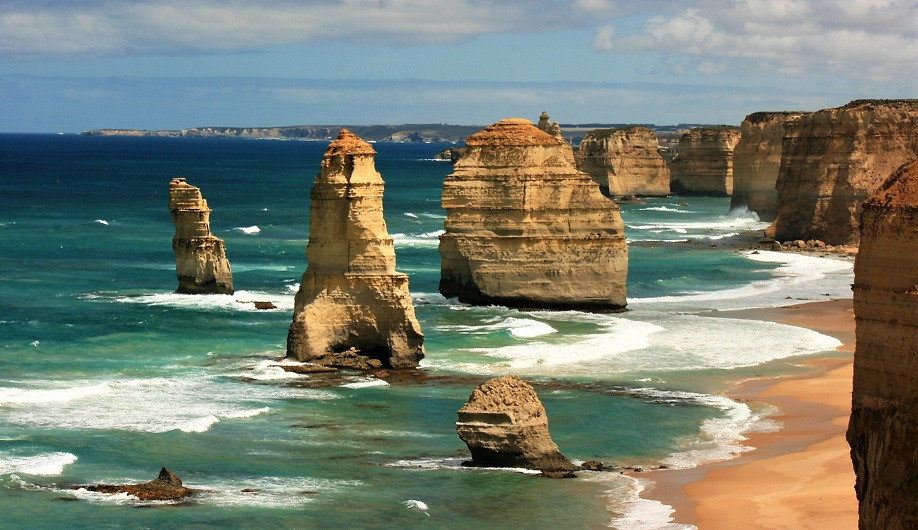The Twelve Apostles in Australia. An Unforgettable Landscape!

The iconic Golden Cliffs and Pillars of the Twelve Apostles are located 7 km from Port Campbell. They are protected by the Doce Apóstoles Marine National Park that covers 7500ha and runs along 17 km of impressive coastline.

The beauty of the water above the park protects some of the most spectacular underwater scenery in Victoria, Australia.
Spectacular arches, canyons, fissures, gutters and deep reefs constitute the environment below the waves.
The wild and powerful waves of the Southern Ocean constantly hit the shoreline. What has shaped the area in what it looks like today.
The remarkable underwater structures provide a base for the magnificent habitats, including kelp forests and colorful sponge gardens.
Many animals thrive both above and below water. These include seabirds, seals, reef fish, lobsters, and sea spiders.
Where does the name Twelve Apostles come from?
The first charts refer to the twelve apostles as the sow and the piglets. The sow refers to Mutton Bird Island, which can be seen from Loch Ard Gorge. And the suckers were the rock formations that surround it to the east.
The rocks are collectively known as the twelve apostles and are not individually named after the biblical apostles. In living memory the 12 Apostles have always been a part of the vernacular.
Can you really see 12 formations?
The twelve Apostles have never been seen from today’s point of view. Historically the stacks were revealed as visitors traveled down the old highway in the Passenger Car connecting Port Campbell to Princetown and beyond to Rivernook.
At first glance, you will see 7 rock stacks to the west with the rest hidden by headlands and obscured by other stacks. To the east are two other rock stacks referred to in the vernacular as Gog and Magog.
These two rock stacks are visible from beach level across a parking lot 1 km east of the Twelve Apostles.
Geology of the Twelve Apostles
The limestone of Port Campbell is generally dated to 15-20 million years old, it is a very common misconception that visitors feel they are viewing an ancient seascape. The formations we see have been formed in the last 6000 years.
The spectacular variety of seascape in Port Campbell National Park and the Bay of Islands Coastal Park is not due to a great inconsistency in erosive forces. It occurs largely due to a number of inconsistencies in the density and durability of the strata.
Activities we can do in the Twelve Apostles
In a place as magical as this magnificent park, it is not surprising that we have endless activities to do.
From wildlife watching to water sports, learn about all the opportunities this park has to offer.
Nature
Reconnect with the elements and allow the hiss of the waves on the shore to transport you away from the daily grind. Wild beaches adorn these southern shores.
The cliff gives way to the swept dunes and the coves provide stretches to inspire, energize and escape! Access is limited, but the beaches are like no other.
Do not miss other places in Australia
Swimming is not recommended on any of the open ocean beaches. Port Campbell Bay offers the safest local option especially when patrolled in season.
The wettest and deepest ravines are found at the westernmost tip of the rainforest in South Australia.
Wildlife Observation
The opportunity for wildlife viewing is exceptional for those with time and patience. Dusk and dawn provide better viewing for many species.
Watersports
There are many outdoor activities that we can do in the Twelve Apostles. Among them we can name snorkeling, kayaking and boats. In Port Campbell we can enjoy swimming in the bay.
We will find golf courses for lovers of this sport. In addition, we can find places to shop near the park. We will also find playgrounds and skateboards.







